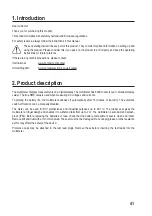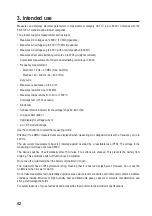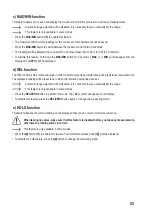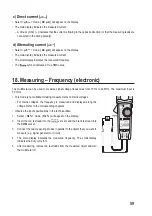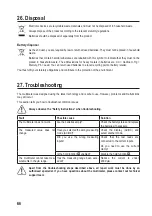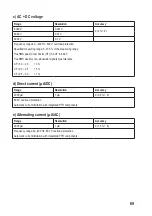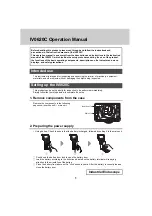
55
b) Direct voltage (V/DC)
The V/DC voltage range has an input resistance of ≥10 MΩ, meaning there is almost no impact on circuit
performance.
• Select <
> mode. [ DC V ] will appear on the display.
• The main display indicates the measured voltage.
- A minus symbol indicates that the measured DC voltage is negative (or that the measuring leads are
connected in the wrong polarity).
c) Alternating voltage (V/AC)
The V/AC voltage range has an input resistance of ≥10 MΩ, meaning there is almost no impact on circuit
performance.
• Select <
> mode. [ AC V ] will appear on the display.
• The main display indicates the measured voltage.
• The small display indicates the measured frequency.
d) Alternating voltage (V/AC) – Low Pass Filter
The low pass filter intercepts voltages exceeding 1 kHz.
• Select < LPF > mode. [ AC V
] will appear on the display.
• The main display indicates the measured voltage.
• The small display indicates the measured frequency.
e) AC + DC voltage
• Select < AC+DC > mode under <
>. [ V
] will appear on the display.
• The main display indicates the measured voltage in form of
.
• The small display alternates between displaying the measured DC voltage and AC voltage.
f) LoZ alternating voltage
<
> mode allows you to measure AC voltages with a low impedance
(approx. 300 kΩ). In this mode, the multimeter lowers the internal resistance to
prevent ‘phantom’ voltage readings. As a result, the circuit is more heavily loaded
than in the standard measuring mode.
The LoZ V/AC voltage range has an input resistance of <300 kΩ,
which may slightly affect circuit performance.
• Select <
> mode. [ AC V ] will appear on the display.
• The main display indicates the measured voltage.
• The small display indicates the measured frequency.

